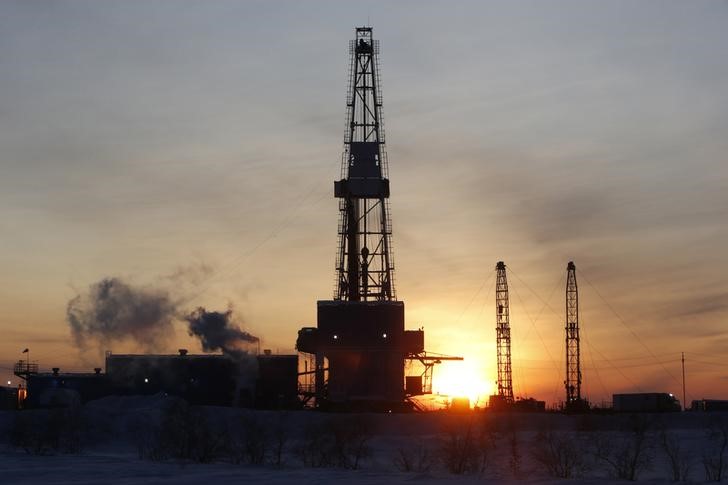Commodities
Oil prices dip amid OPEC uncertainty; econ. data deluge on tap


© Reuters.
Investing.com– Oil prices fell in Asian trade on Monday as markets remained uncertain over more production cuts by the OPEC+ after a delay in a meeting this week, while anticipation of a string of key economic readings also kept traders on edge.
Crude prices sank for a fifth straight week as hopes of more supply cuts by the Organization of Petroleum Exporting Countries and allies (OPEC+) were largely offset by a delay in the , to Nov. 30 from Nov. 26, especially as reports suggested the delay was caused by disagreements over planned production cuts.
expiring January fell 0.3% to $80.32 a barrel, while expiring January fell 0.4% to $75.26 a barrel by 21:02 ET (02:02 GMT). Both contracts closed marginally lower in the past week.
OPEC+ production cuts take center stage
Saudi Arabia and Russia- two of the top producers in the OPEC+, are largely expected to extend or deepen their ongoing supply reductions. The two led the OPEC+ in curbing supply this year, amid growing fears that high interest rates and worsening economic conditions will dent global oil demand.
But production in other OPEC+ members was seen increasing in recent months. Reuters reports also showed that some African nations planned to increase production at the upcoming meeting, which clashed with the plans of de-facto OPEC+ leader Saudi Arabia.
Increased production by some OPEC+ members, coupled with record-high U.S. production and growing Chinese stockpiles made oil markets appear not as tight as initially thought this year. The trend is likely to draw more production cuts from Saudi Arabia and Russia, which analysts expect will tighten supply going into 2024.
Inflation, business activity readings on tap
Oil markets were also cautious before a string of major economic readings this week, starting with on Thursday. The bloc slipped into a technical recession in the third quarter, ramping up concerns over slowing crude demand.
Chinese data is due on Thursday, and is set to offer more cues on business activity in the world’s largest oil importer. Economic activity in the country has remained largely languid in recent months which, coupled with surging oil inventories, could spur a slowdown in Chinese oil demand.
A second reading on U.S. for the third quarter is also on tap this week, as is a reading on – the Federal Reserve’s preferred inflation gauge. Both readings are expected to show continued resilience in the U.S. economy.
But U.S. oil demand is set to cool in the coming months, as the winter season restricts travel.
Commodities
Oil prices rise; U.S. crude inventories plunge, Russia-Ukraine truce eyed
Commodities
India’s Reliance to stop buying Venezuelan oil over US tariffs, sources say
Commodities
Oil prices climb on Venezuela supply worries

 Forex3 years ago
Forex3 years agoForex Today: the dollar is gaining strength amid gloomy sentiment at the start of the Fed’s week

 Forex3 years ago
Forex3 years agoUnbiased review of Pocket Option broker

 Forex3 years ago
Forex3 years agoDollar to pound sterling exchange rate today: Pound plummeted to its lowest since 1985

 Forex3 years ago
Forex3 years agoHow is the Australian dollar doing today?

 Cryptocurrency3 years ago
Cryptocurrency3 years agoWhat happened in the crypto market – current events today

 World3 years ago
World3 years agoWhy are modern video games an art form?

 Commodities3 years ago
Commodities3 years agoCopper continues to fall in price on expectations of lower demand in China

 Economy3 years ago
Economy3 years agoCrude oil tankers double in price due to EU anti-Russian sanctions



























